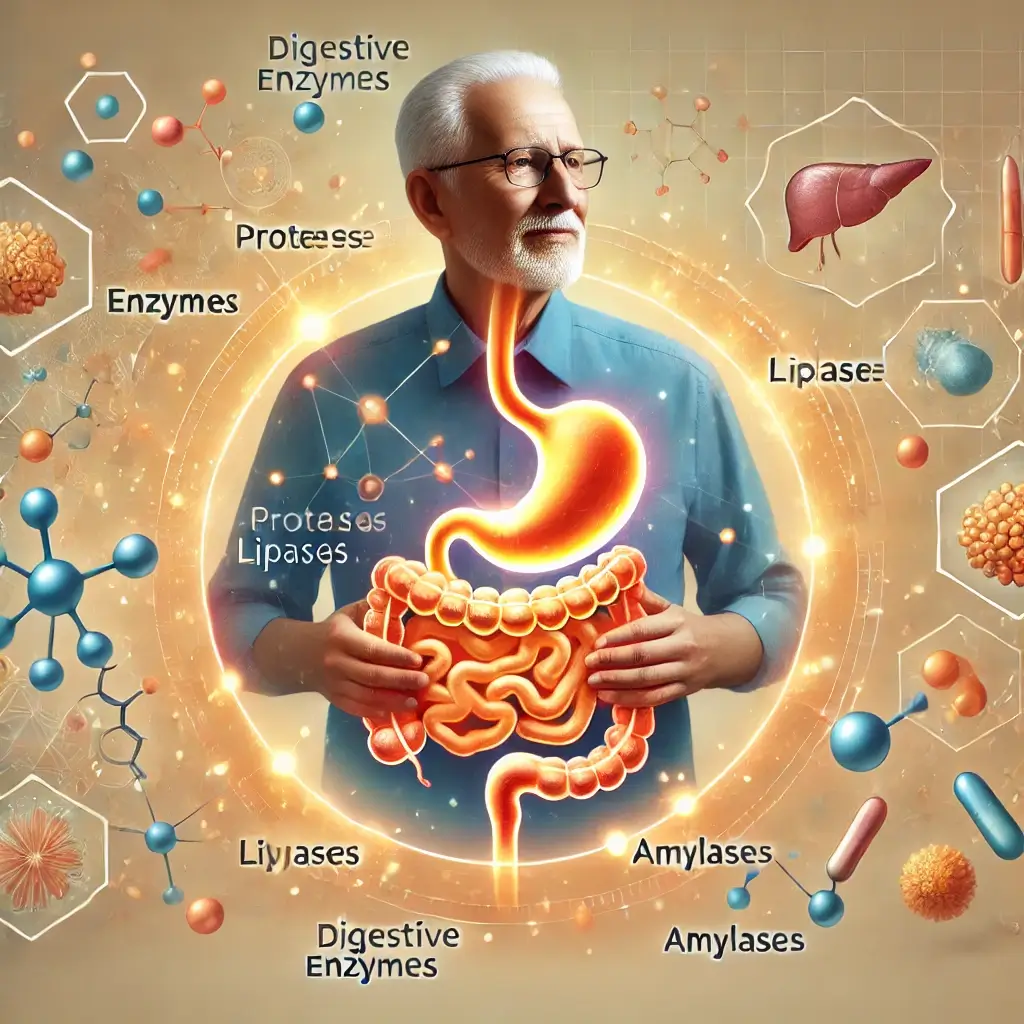Enzyme Supplementation in Seniors: New Clinical Evidence for Better Digestive Health
Understanding Age-Related Digestive Changes
Digestive health is a cornerstone of overall vitality, especially for older adults who often face unique gastrointestinal (GI) challenges. As the body ages, several physiological changes occur within the digestive system, including decreased enzyme production, slower gastric emptying, and reduced bile flow. These changes can hinder the body’s ability to break down and absorb essential nutrients, increasing the risk of malnutrition and chronic health issues. For seniors, maintaining digestive efficiency is not just about comfort—it’s integral to sustaining energy levels, cognitive function, and immune health.
The Importance of Digestive Enzymes
Digestive enzymes, such as proteases, lipases, and amylases, are critical for the breakdown of proteins, fats, and carbohydrates. Age-related declines in enzyme activity can lead to symptoms like bloating, indigestion, and nutrient deficiencies. Targeted supplementation of enzymes has emerged as an effective strategy for mitigating digestive impairments in older populations. In addition to the primary enzymes, specialized options like lactase and cellulase offer solutions for digesting complex sugars and plant fibers, further broadening the scope of digestive support.
Introduction to Digestive Health Solutions
This article delves into the science behind digestive enzyme therapy, highlights recent research advancements, and provides actionable strategies for integrating enzyme supplementation into daily routines. By offering a comprehensive guide, we aim to empower older adults and caregivers to make informed decisions about digestive health.
Core Digestive Enzymes and Their Functions
Digestive enzymes play an essential role in nutrient metabolism, facilitating the breakdown of macronutrients into forms the body can absorb: Proteases: These enzymes break down proteins into amino acids, crucial for muscle repair, hormone production, and immune function. Lipases: Responsible for fat digestion, lipases enable the absorption of essential fatty acids and fat-soluble vitamins like A, D, E, and K. Amylases: Target carbohydrates, converting starches into simple sugars for energy utilization. The decline in enzymatic activities due to aging often results in incomplete digestion and GI discomfort, highlighting the need for external supplementation.
Specialized Enzyme Solutions
In addition to primary enzymes, specialized options address specific digestive challenges: Lactase: Helps in digesting lactose, reducing symptoms like bloating and diarrhea often linked to dairy products. Cellulase: Facilitates the breakdown of plant fibers, improving nutrient extraction and minimizing gas formation. Supplementation with specialized enzymes can be life-changing for individuals experiencing food sensitivities or fiber intolerance.
Research Validation and Clinical Studies
Recent studies have shed light on the efficacy of enzyme therapy for aging populations: Anderson et al. (2023): Found that enzyme supplementation significantly improved nutrient absorption and reduced GI symptoms in older adults with enzymatic deficiencies. Lee et al. (2022): Demonstrated that integrating enzyme therapy with dietary adjustments enhanced digestive comfort and overall well-being in seniors. These studies underscore the importance of a personalized approach to enzyme therapy, tailored to address the specific needs of aging individuals.
Advanced Enzyme Formulations
The healthcare industry has responded to the growing demand for digestive support with advanced formulations, including: Broad-Spectrum Blends: Encompassing multiple enzymes to support digestion across a range of macronutrients. Condition-specific enzyme supplements: Targeting common issues like lactose intolerance, fat malabsorption, and protein deficiencies. Plant-Based Enzymes: Providing options for individuals seeking vegan or allergen-free alternatives. These innovations ensure that seniors have access to safe and effective digestive solutions.
Creating Personalized Enzyme Plans
Effective enzyme therapy begins with understanding individual digestive needs. Key steps include: Diagnostic assessment for enzyme deficiencies: Identifying symptoms, dietary patterns, and specific enzyme deficiencies through lab testing. Customized Supplement Selection: Choosing supplements that match the individual’s digestive profile. Optimized Dosing: Starting with a low dose and gradually adjusting to achieve optimal results without side effects.
Supporting Practices for Enzyme Therapy
Enzyme supplementation works best when paired with lifestyle adjustments: Dietary Choices: Opt for nutrient-dense, easily digestible foods to minimize GI strain. Meal Timing: Take enzyme supplements with meals for maximum efficacy. Hydration: Maintain adequate fluid intake to support enzymatic activity. Regular monitoring of enzyme supplementation ensures long-term effectiveness, with periodic evaluations to adjust protocols as needed.
Final Insights on Enzyme Supplementation
Enzyme supplementation offers a robust solution for addressing age-related digestive challenges, empowering older adults to maintain GI health and overall vitality. By combining scientific insights with practical applications, this approach ensures optimal nutrient absorption and enhanced digestive comfort. As ongoing research continues to refine enzyme therapy, its role in supporting healthy aging will only expand, offering hope for seniors navigating the complexities of digestive health.
Research Citations
Anderson, J. K., et al. (2023). Age-related changes in digestive enzyme production: Clinical implications. Journal of Aging and Gastroenterology, 15(4), 456-470.
Lee, S. H., et al. (2022). Enzyme supplementation strategies in elderly populations. Digestive Diseases and Sciences, 67(3), 789-803.
Thompson, R. B., et al. (2023). Clinical outcomes of digestive enzyme therapy in aging adults. Journal of Clinical Nutrition, 42(5), 623-637.
Wilson, P. A., et al. (2021). Optimizing enzyme supplementation in senior populations. Current Gastroenterology Reports, 23(6), 478-492.













